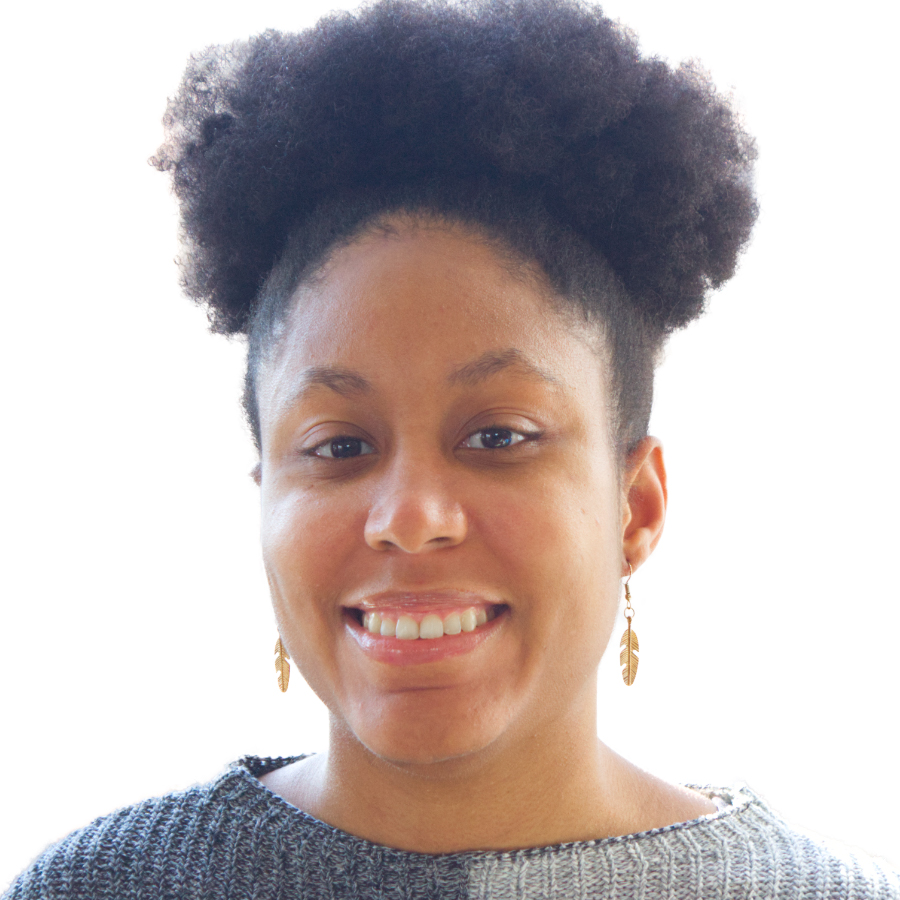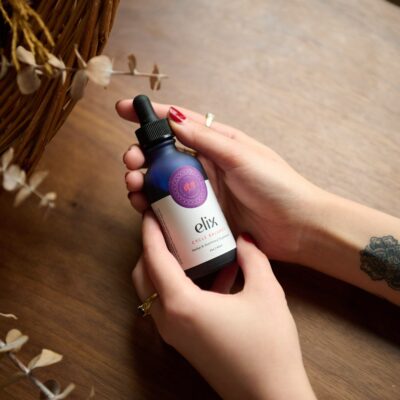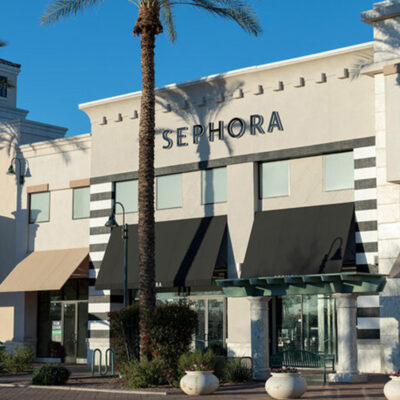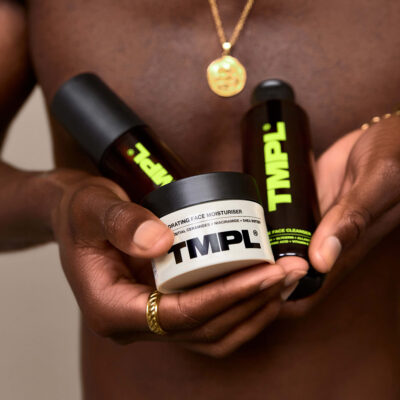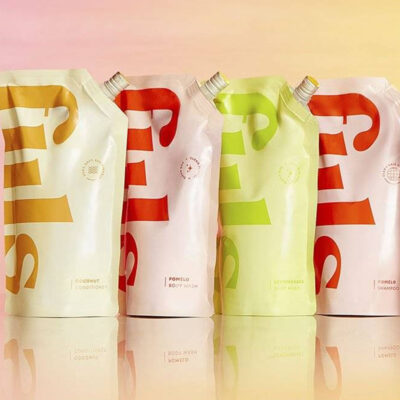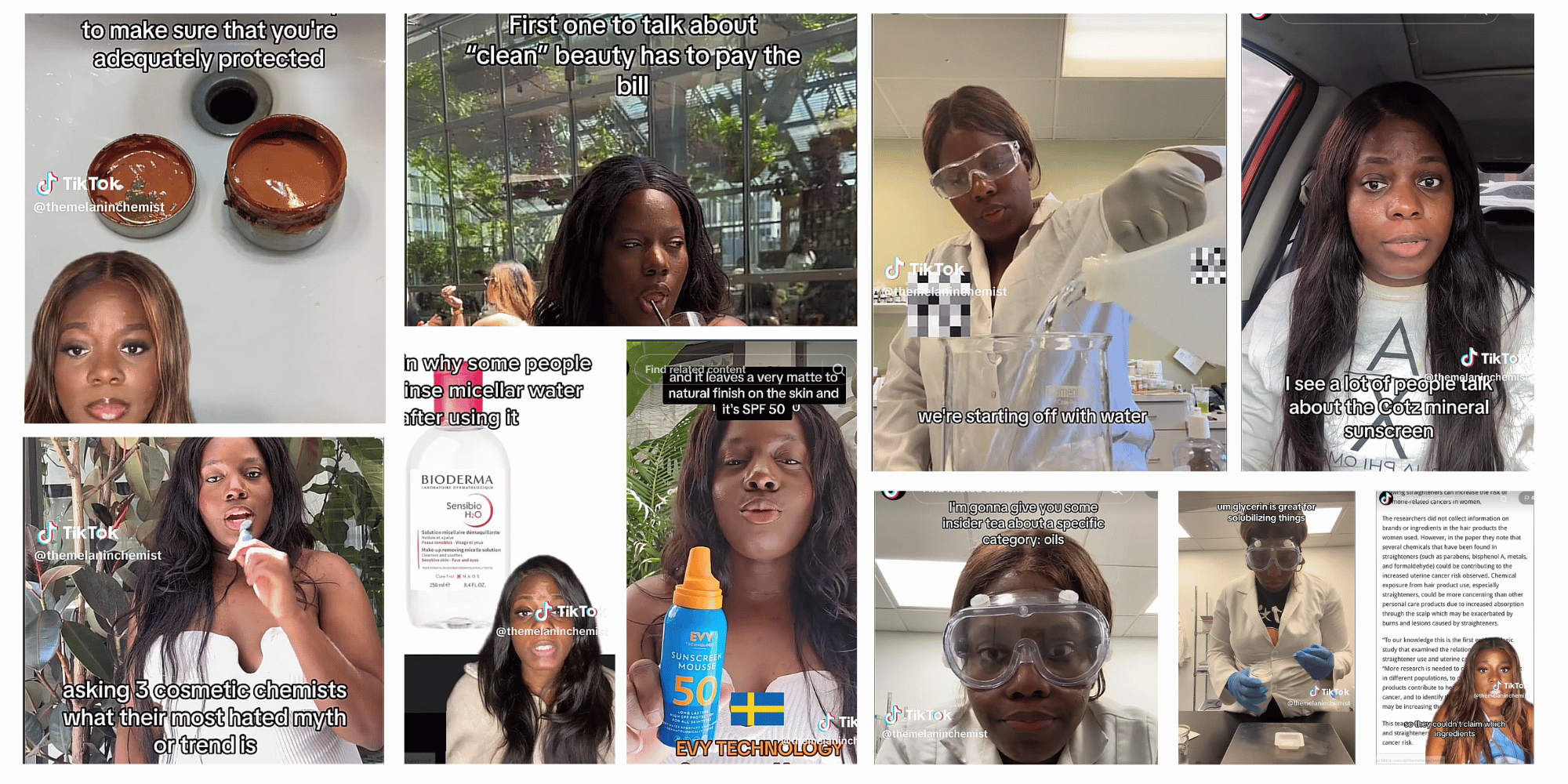
Esther Olu, Aka The Melanin Chemist, On Learning Her Worth And What Makes A Successful Brand Partnership
On social media, cosmetic chemists have become a key conduit between labs and beauty laypeople. Esther Olu, aka The Melanin Chemist, is one of the most popular. She has over 60,000 followers across Instagram, TikTok and Twitter devouring her content that demystifies skincare from a scientific perspective. She breaks down the process of making various formulas, from chemical peels to cleansers, reveals why certain ingredients are in them, explains how products should be applied and dives into recalls.
As she’s moved from behind the scenes to the front of screens, Olu is the first to admit she’s still acclimating to having a public persona. “I view myself as a normal person. I don’t view myself as an expert or an influencer or anything like that, even though people view me that way,” she says. “So, when I was getting all these followers, I was incredibly overwhelmed getting all these comments, followers and messages. I didn’t know how to handle it. And, to be honest, I still am navigating how to handle it.”
Beauty Independent caught up with Olu to learn about the content that resonates with her audience, her favorite and least favorite skincare ingredients, a beauty marketing tactic that irks her, the amount she charges brands, innovations that intrigue her and a big change she wishes the beauty industry would make.
How did you become a cosmetic chemist and aesthetician?
For cosmetic chemistry, it was something I kind of fell into. I double-majored in chemistry and liberal arts. I did media and cultural studies, two opposite studies. When I was about to graduate undergrad, I didn’t want to do the traditional route of going to pharmacy or medical school, even though that was what my parents were pressuring me to do.
So, I was working for a skincare brand as a consultant. They’re called Nature Republic. At the time, I was also looking on YouTube and just seeing what was out there. That’s how I came across cosmetic science. I thought it was really fascinating that you have all of these products that are somehow made in a lab.
For aesthetics, I had a lot of mutuals that were aestheticians. I felt that cosmetic chemistry is a very fascinating field, but we simply know only know how to make the products. We don’t really understand how things are applied to people’s skin. I wanted to have the practical experience of working in the lab, but also working on people’s faces as well.
I recently got a license in aesthetics, and I’ve been in cosmetic science for about six years now. [I’ve been on social media] for about three years, but, to be honest, I’m not consistent with it.
How do you start being active on social media? What’s it been like?
It was during that time I was working on my master’s program. I loved everything I was learning, I wanted an outlet to talk about it. I did not come online for the purpose of wanting to be a cosmetic chemistry expert. If people found me, that was fantastic, but I wasn’t promoting my accounts in any way.
That was a very interesting time when I was starting to get followers, and people were like, “Oh, follow the melanin chemist.” I was like, “What’s going on?” Being on the forefront of it, it’s very anxiety-inducing. It’s also nice to have people that are very supportive of your work, receive it very well and have nothing but great things to say or constructively provide you feedback to improve as a scientist. It’s a double-edged sword.
What content strikes a chord with your audience?
A lot of it is debunking myths, but I’ve been starting to diversify my content a little bit more, delving into product reviews here and there. I like to do entertaining content here and there to show my personality more, but like most people are there to learn about the science behind products and formulations as well as the myths and misinformation going on in the industry.
How’s the role of cosmetic chemist changing?
The majority of this time, it’s cosmetic chemists in the background, we’re making the products, no one knows who we are. People just assume that the faces of brands and influencers are the people that are making the products. Now we’re seeing this shift of cosmetic chemists actually showing their faces and showing, OK, this is how we make a moisturizer, this is how we make a serum or this is why we use these ingredients in these formulas and providing the nuance.
Cosmetic chemistry in general is such a niche, very niche field. That’s partly why no one really knew about it at the time, but now that we see a lot of science communicators coming online, debunking misinformation or even just showing this is what my day-to-day looks like on TikTok, we’re seeing that shift. I think the shift really has to do with people just wanting to show the field more.
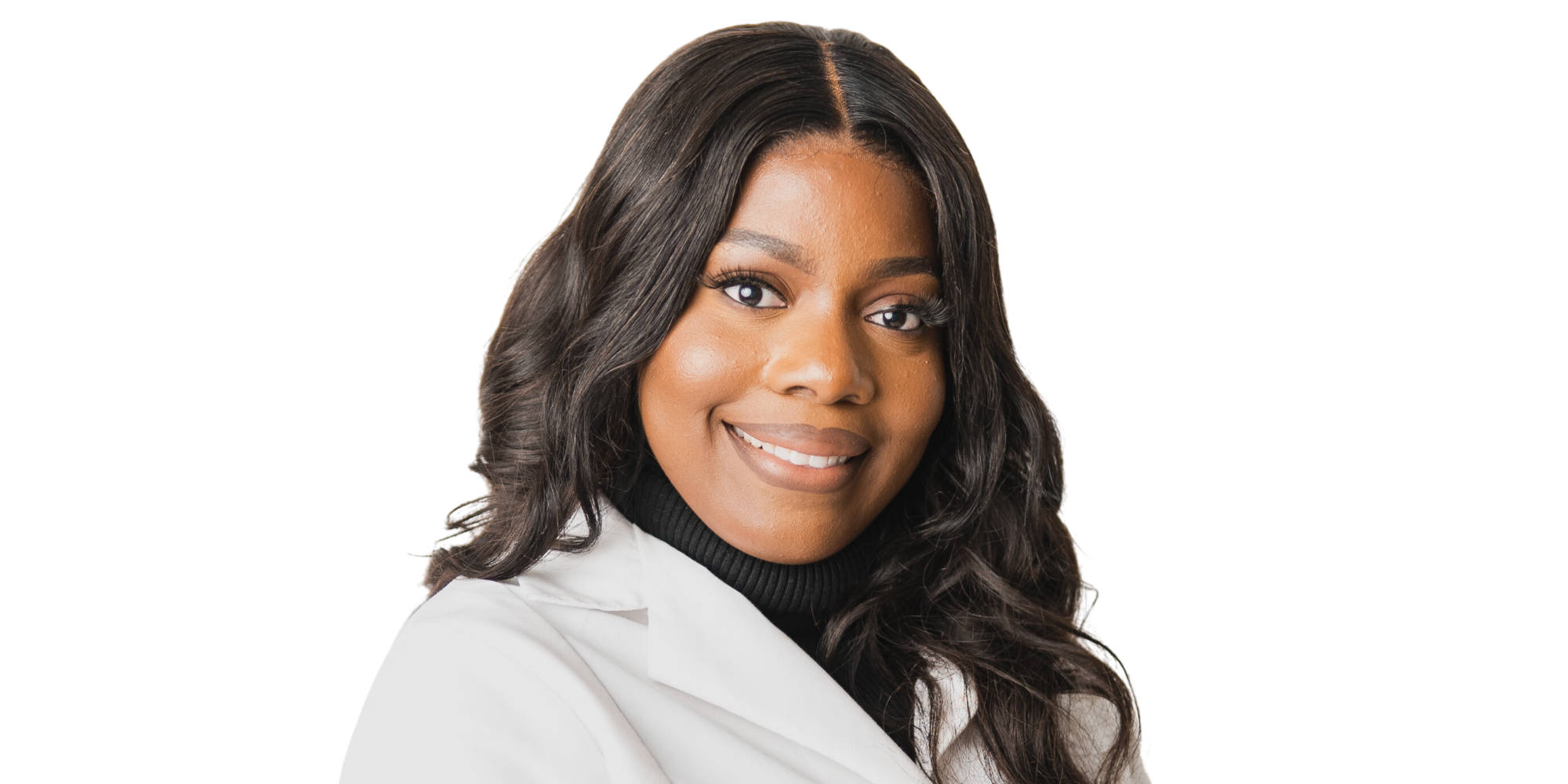
What do you currently see on the market that’s innovative?
There are two areas that I find pretty interesting. The whole aspect of suppliers seeing what ingredients or any new technology that they come up with that strays away from prescription drugs so that a consumer won’t have to go see a physician to get it. I like to see what alternatives suppliers come up with that have not the same effects, but similar effects that can make treating skin conditions more accessible for consumers.
For example, I love retinal, and it’s becoming more mainstream in formulations. It’s such a wonderful ingredient. Seeing that you can still get the benefit of a retinoid without having to go see a dermatologist to get a prescription is amazing.
Also, the aspect of biotechnology and the efforts for sustainability. A lot of suppliers are looking into upcycled ingredients. There are going to be a lot more advancements in biotechnology that I’m really looking forward to.
There’s also a lot of interest in artificial intelligence. It’s started to have an influence in shade matching, for example, in Sephora, but I think it is going to start to trickle down into cosmetic chemistry, too. In school, I took an artificial artificial intelligence class. I heard about AI, but I never actually learned about it until I was in class, and I was really amazed. Then, I was looking at all the downsides, and there’s bias and racism in the modeling, of course. So, I’m curious to see what’s going to happen with it.
What are things behind the scenes that people don’t know about that you want them to understand?
There is so much, but, for one, that products are regulated. I know there’s a lot of misconceptions that the FDA doesn’t regulate cosmetics, but the amount of paperwork that we have to go through every day is a lot. On the PD marketing side, consumers may not realize that there’s actually a disconnect between chemists, marketers and product development. We are pretty much doing what marketing NPD wants, and we’re not always on the same page.
We can’t just add anything that we want. We have to go through a lot of stability testing, and we have to ensure that what we make in the lab can be scaled to an actual huge manufacturing facility. That doesn’t always translate well. It’s very rare for everything to go smoothly. The product that you see in the store, just know that a lot of work was definitely happening to make that product happen.
Your favorite beauty ingredient is azelaic acid. Tell us why and what your least favorite ingredient is.
I’ve definitely come to love azelaic acid because it’s very multifaceted. It’s a great anti-inflammatory ingredient, so it deals really well with rosacea and helps with evening out skin tone. It’s also a good antioxidant, so it’s helping to fight off free radicals. Also, it helps really well with breakouts. It also has mild exfoliating properties, too. I like to recommend consumers look for ingredients or products that are doing more than one thing because it could cut down your routine.
On the other hand, there’s this ingredient called a radish root ferment. It’s a preservative, but it’s a really weak preservative. People like to use that as a preservative, but it’s super, super weak. So, I think it would have to be that one that is not my favorite.
You’ve worked with brands on sponsorships. What do you charge them for posts? How do you evaluate what brands to take on for sponsorships?
I didn’t really start working with brands until last year. Even though I’ve had my content out for three years now, I started pretty low. I didn’t really know what to charge. I’ve done $2,500 for a blog post, but now it’s starting to reach the five-figure region. I’ve turned down a lot of deals. Some were like $40,000 for an annual partnership, some were $30,000.
The way that I select partnerships, it really has to do with if they align with me as a person and also as a creator. I don’t like to accept anything that comes my way because it does reflect back on me. I want to make sure that whatever I’m presenting to my audience is something that I can see them using for themselves.
I also watch how brands treat creators and consumers. I’m very particular about that. I haven’t been in the industry or the content creation industry long, so the technicalities of it have been a learning experience for me, seeing how brands take advantage of creators.
I try to preach to my colleagues and other creator friends about learning their worth and making sure that they’re being treated well by brands. So, if I see that a brand is treating one of my colleagues poorly or me poorly, that is a huge indicator that I’m not going to move forward with that brand regardless of how much money that they’re throwing at me.
At least come with the intent that you value me. If you are coming to me as a Black person to market and promote your products, but you don’t actually do anything with Black people, what are we doing? Where’s the accountability? Where’s the ethics? What’s your principle that you stand on? If you’re not ethical, I can’t work with you.
What’s been a successful partnership for you?
My most successful partnership or even relationship is with Deciem. They own the Ordinary and Niod. They have been just very great to me. I worked with them throughout last year. I did a presentation for them during Black History Month, and they came back to work with me through a Twitter collaboration. I worked with them on tour at the end of last year.
They have shown me time and time again how much they value me and care about me. They always send me support just beyond me doing sponsorships for them. But they’ve shown me that they value me as a person, and also as a creator. And that truly means the world to me.
You went public with an issue you had with a small brand you worked with. What did you learn from that?
I’ve definitely grown a lot since then. I have learned personally to have boundaries. That was something that I did not have at the time. I didn’t name names in the post, but, eventually, it did become public. I didn’t have bandwidth with them, I didn’t have contracts in place, and contracts weren’t given to me. So, it was a lot of red flags throughout the process.
To be honest, I just wasn’t prepared. I didn’t really ask questions, I didn’t ask advice from people that I would look up to. That could have definitely helped me take the correct action that would’ve prevented the situation from becoming what it did. It’s also OK to say no. During that time I was also in a very vulnerable position, and it just seemed like such a great opportunity. Looking back on it, I just really wasn’t ready to take the opportunity.
After going public with the situation, I received messages from others saying that they had very similar experiences with the brand, too. I felt validated that I wasn’t alone in the way that I was being treated, and it wasn’t like a singular experience. I think it was a very important lesson lesson for me. If I do decide to go back into independent formulation again, I now know the right action to take.
What’s a marketing tactic that bugs you?
Definitely clean beauty. It’s really in the sense that marketing tries to position it as if it’s superior to something non-clean. It leaves a very negative perception, which I don’t like because I’m really huge on inclusivity and accessibility for consumers. And it’s going to make a consumer have to spend more money to get clean when they can just buy something that doesn’t have that label.
There’s so many layers to it, and I think sometimes consumers aren’t asking those questions. What does clean mean to these brands? I’m pretty sure, if you were to have 10 clean brands, everyone’s going to have a different answer for what they think clean is. There’s no standard.
Would you ever start your own brand?
At this time no. I don’t really see myself being at a brand founder. I haven’t fully thought about the question. I just can’t really see it happening for myself, but I need to stop saying never, never, never. I don’t want to feel like I’ll never do it, I just can’t see myself doing it right now.
If you had a magic wand, what changes would you make to the beauty industry?
Definitely more inclusivity and accessibility. That’s my biggest thing. I want to see people that have our skin tones more at the forefront, whether that’s working in the labs, in marketing and also testing in general. There’s just so much more room for possibility. So, if I could change that, I think that change would make such a huge impact in the industry.
This interview has been edited for clarity and brevity.
